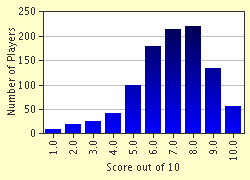Quiz Answer Key and Fun Facts
1. Let's begin with "chillis" or "chilli peppers", those pungent things forming an integral part of most of our diets. We put them in our food, and yet we dread them! Which organic compound is responsible for giving us that "burning" sensation when we bite into a chilli?
2. Lemons, oranges, grapefruit, limes, tangerines, and several other fruits are known for their 'sourness' and similarity in structure. All of them belong to the same genus, and so are very closely related. Which acid gives these fruits their characteristic taste?
3. Ever heard of or seen stalactites and stalagmites? Those pointed projections that extend from the ceiling (stalactites) and rise from the floor (stalagmites) of caves and caverns? Both of them are formed by the dripping of solutions of a certain compound. Which compound is the solute in this solution?
4. This pigment is what affects the colour of the hair, skin and eyes in humans and other mammals. It also helps protect the skin from the Sun's harmful ultra-violet (UV) rays. It is what helps human skin tan in the sun. What is the name of this pigment?
5. Escherichia coli (or E. coli) bacteria are very essential for us, while at the same time, they can pose a hazard. They break down certain foods we eat, such as beans and green leafy vegetables, to release different nutrients. Which part of our digestive tract do they inhabit?
6. This acid is the most acidic of all organic acids and has the chemical formula CH2O2. It is present in the stings of stinging nettles, bees and ants. Which acid is this?
7. A bee-sting, unlike a wasp sting, is acidic in nature.
8. The spider-webs we see around us are constructed out of fine, silky threads of a certain variety of chemical compounds. Which compounds are these?
9. Getting back to E. coli. These bacteria also manufacture a certain vitamin for us in our bodies; which one is it?
10. Poison ivy is one of the most harmful plants; its main potent ingredient is a certain oil. Which oil is this?
Source: Author
achernar
This quiz was reviewed by FunTrivia editor
crisw before going online.
Any errors found in FunTrivia content are routinely corrected through our feedback system.

